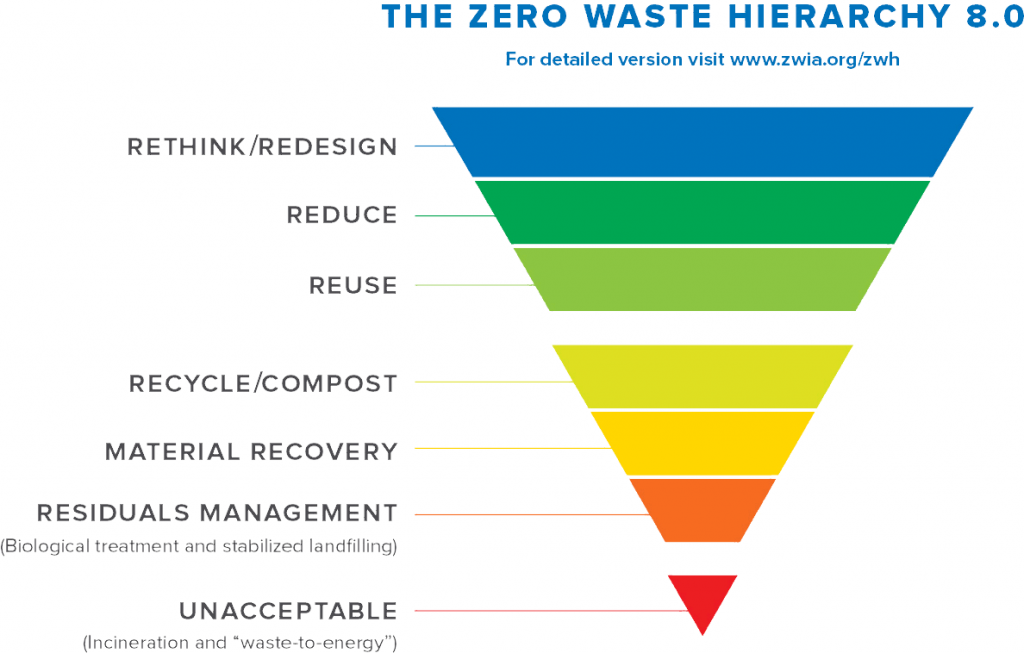
RETHINK / REDESIGN
Systemic change to move towards a closed loop** model; redesign of systems to avoid needless and/or wasteful consumption. Actions that address the root causes of the current linear use of materials.
RETHINK / REDESIGN
- Consider if a purchase is necessary and reject unnecessary, unsolicited items
- Design and purchase products from reused, recycled or sustainably-harvested renewable, non-toxic materials to be durable, repairable, reusable, fully recyclable or compostable, and easily disassembled
- Shift funds and financial incentives to support a Circular Economy** over the harvesting and use of virgin natural resources
- Enact new incentives for cyclical use of materials, and disincentives for wasting
- Facilitate change in how end users’ needs are met from “ownership” of goods to “shared” goods and provision of services
- Support and expand systems where product manufacturing considers the full life-cycle of their product in a way that follows the Zero Waste Hierarchy and moves towards more sustainable products and processes. Producers take back their products and packaging in a system that follows the Zero Waste Hierarchy.
- Identify and phase out materials that cause problems for Closed Loop Systems*
- Facilitate and implement policies and systems to encourage and support Local Economies*
- Re-consider purchasing needs and look for alternatives to product ownership
- Provide information to allow for informed decision-making
- Eliminate or avoid systems that drive needless consumption
